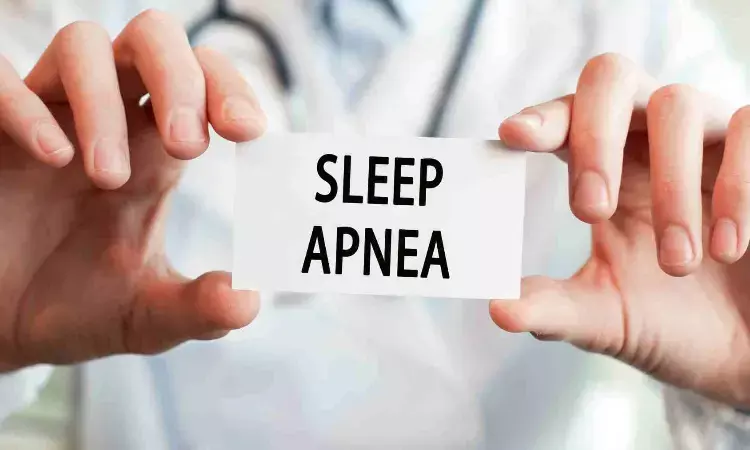- Home
- Medical news & Guidelines
- Anesthesiology
- Cardiology and CTVS
- Critical Care
- Dentistry
- Dermatology
- Diabetes and Endocrinology
- ENT
- Gastroenterology
- Medicine
- Nephrology
- Neurology
- Obstretics-Gynaecology
- Oncology
- Ophthalmology
- Orthopaedics
- Pediatrics-Neonatology
- Psychiatry
- Pulmonology
- Radiology
- Surgery
- Urology
- Laboratory Medicine
- Diet
- Nursing
- Paramedical
- Physiotherapy
- Health news
- Fact Check
- Bone Health Fact Check
- Brain Health Fact Check
- Cancer Related Fact Check
- Child Care Fact Check
- Dental and oral health fact check
- Diabetes and metabolic health fact check
- Diet and Nutrition Fact Check
- Eye and ENT Care Fact Check
- Fitness fact check
- Gut health fact check
- Heart health fact check
- Kidney health fact check
- Medical education fact check
- Men's health fact check
- Respiratory fact check
- Skin and hair care fact check
- Vaccine and Immunization fact check
- Women's health fact check
- AYUSH
- State News
- Andaman and Nicobar Islands
- Andhra Pradesh
- Arunachal Pradesh
- Assam
- Bihar
- Chandigarh
- Chattisgarh
- Dadra and Nagar Haveli
- Daman and Diu
- Delhi
- Goa
- Gujarat
- Haryana
- Himachal Pradesh
- Jammu & Kashmir
- Jharkhand
- Karnataka
- Kerala
- Ladakh
- Lakshadweep
- Madhya Pradesh
- Maharashtra
- Manipur
- Meghalaya
- Mizoram
- Nagaland
- Odisha
- Puducherry
- Punjab
- Rajasthan
- Sikkim
- Tamil Nadu
- Telangana
- Tripura
- Uttar Pradesh
- Uttrakhand
- West Bengal
- Medical Education
- Industry
Severe Sleep Apnea Doubles the Risk of Cerebral Microbleeds: JAMA

A new study published in JAMA Network Open has shown that moderate to severe obstructive sleep apnea is associated with a significantly increased risk for future cerebral microbleeds. The study showed that those patients with severe obstructive sleep apnea (OSA) had a risk for developing cerebral microbleeds (CMBs) that was more than twice as great as that of participants without OSA, even after adjustments for cardiovascular and metabolic risk factors. The study was conducted by Ali T. and colleagues.
Obstructive sleep apnea is a common sleep disorder that presents with periodic pauses in breathing during sleep and is associated with intermittent hypoxia and its related oxidative stress and fluctuations in blood pressure. This community-based cohort study of middle-aged adults in Korea aimed to investigate whether the severity of OSA was associated with an increased risk of incident CMBs during long-term follow-up. It combined sleep study data with brain MRI findings to determine how chronic nocturnal hypoxia and vascular stress from OSA may lead to cerebral microvascular damage.
In the present study, data from a total of 1,441 participants (mean [SD] age: 57.75 [5.53] years; 759 female [52.67%]) who underwent overnight polysomnography and brain MRI between 2011 and 2014 at baseline, with follow-up MRI scans at 4 years (2015–2018) and 8 years (2019–2022), were analyzed. Participants were categorized by apnea-hypopnea index (AHI) into:
• No OSA: 0–4.9 events/hour (812 participants)
• Mild OSA: 5.0–14.9 events/hour (436 participants; 30.25%)
• Moderate to Severe OSA: ≥15.0 events/hour (193 participants; 13.39%)
CMBs were defined as small, distinct areas (<10 mm) of very low signal intensity on T2*-weighted gradient echo MRI images. Modified Poisson regression models were used to estimate RR for developing CMBs while adjusting for age, sex, education, body mass index, hypertension, diabetes, cholesterol levels, smoking, and APOE-ε4 status.
Results
Over the follow-up period, the risk of developing new CMBs increased with OSA severity.
At 4 years, the cumulative incidence of CMBs was:
• No OSA: 15 participants (1.85%)
• Mild OSA: 7 participants (1.61%)
• Moderate to Severe OSA: 9 participants (4.66%)
At 8 years, the incidence increased further:
• No OSA: 27 participants (3.33%)
• Mild OSA: 14 participants (3.21%)
• Moderate to Severe OSA: 14 participants (7.25%)
• In models adjusted for confounding variables, the risk of new cerebral microbleeds was more than two-fold higher in participants with moderate to severe OSA compared to those without OSA (RR = 2.14; 95% CI, 1.08–4.23; P = 0.02).
• This elevated risk remained independent of APOE-ε4 carrier status, a known genetic risk factor for neurodegenerative disease.
• No significant association was found between mild OSA and CMB incidence, nor did the risk increase at the 4-year time point.
This study concluded that moderate to severe obstructive sleep apnea was independently associated with an over twofold increased risk of developing cerebral microbleeds over 8 years. Mild OSA was not significantly associated, suggesting that OSA is not simply a respiratory disorder but a serious risk factor for brain microvascular injury, which supports the inclusion of sleep health in strategies aimed at protecting long-term brain health and preventing cerebrovascular disease.
Reference:
Siddiquee AT, Hwang YH, Kim S, et al. Obstructive Sleep Apnea and Cerebral Microbleeds in Middle-Aged and Older Adults. JAMA Netw Open. 2025;8(10):e2539874. doi:10.1001/jamanetworkopen.2025.39874
Dr Riya Dave has completed dentistry from Gujarat University in 2022. She is a dentist and accomplished medical and scientific writer known for her commitment to bridging the gap between clinical expertise and accessible healthcare information. She has been actively involved in writing blogs related to health and wellness.
Dr Kamal Kant Kohli-MBBS, DTCD- a chest specialist with more than 30 years of practice and a flair for writing clinical articles, Dr Kamal Kant Kohli joined Medical Dialogues as a Chief Editor of Medical News. Besides writing articles, as an editor, he proofreads and verifies all the medical content published on Medical Dialogues including those coming from journals, studies,medical conferences,guidelines etc. Email: drkohli@medicaldialogues.in. Contact no. 011-43720751


